You may have seen the crazy events where men and women lift giant stones, carry logs, and pull vehicles. Did you ever think that this type of training might be exactly what you need to do to have better fitness results? Strongman workouts aren’t as intimidating as they seem. Let’s look at the benefits of Strongman training, and why you should start incorporating it into your training program.
.jpg?width=532&height=342&name=GettyImages-1083005864(1).jpg) Muscle Mass Gains
Muscle Mass Gains
There are two important factors in muscle mass building. First, you want to apply the strategic tearing down of the muscle tissue and the subsequent rebuilding via nutrition and rest. Strongman workouts provide the right amount of wear and tear on the muscle tissue to safely tear it down so that it can be rebuilt bigger and stronger than before. Second, growth hormone levels in your body enable a better recovery state and directly influence muscle growth. Heavy lifting, which is what Strongman workouts are all about, has been shown to result in a higher release of growth hormone, which can support muscle mass growth.
Increased Strength
When these athletes are carrying giant logs and moving Atlas stones, it almost goes without saying that they will notice changes in their strength levels. Strongman workouts are based on compound and functional movement patterns, which use several major muscle groups at the same time. Include this with a heavy weight load, lower repetitions, and higher sets, and you are likely to see strength gains. Studies show that Strongman workouts are just as effective as traditional resistance-based workouts at improving your strength levels. However, it’s not just your major muscle groups that will see the benefit; your grip strength will also improve a lot.
Improvement on Functional Movement Capacity
With a powerlifting workout, you are focusing on three exercises that begin at Point A and end at Point B. Many Strongman exercises take place in different planes of movement, which can help your day-to-day functional movement patterns. For example, when performing the Farmer’s Walk, you are holding heavy dumbbells or kettlebells and walking across the floor for a prescribed distance. Another example is carrying an Atlas stone; again, you are holding a heavy weight with proper posture and moving that weight. This translates into real-world benefits such as when you are carrying groceries, playing with the kids, or doing chores. Improving your functional movement capacity will result in a higher quality of life and a lower risk of injury.
Accelerated Fat Burning
As mentioned above, Strongman exercises activate several major muscle groups simultaneously. For example, the sled drag involves the quadriceps, hamstrings, calves, glutes, hip flexors, chest, arms, and core. That is a lot of muscle groups for one movement. The more muscles you use and the greater the intensity during the exercise, the more calories you will burn. Strongman workouts allow you to build muscle mass while helping you lean out. Studies show that compound movements, such as Strongman exercises, can help promote fat burning.
Smashing Through Plateaus
If you have been lifting for a while and you feel as if you are not progressing, consider Strongman workouts. The Strongman style of training pushes you outside of your box, challenges your muscles in a new way, and can potentially help you smash through your plateau. Incorporating a Strongman workout in place of your current traditional resistance training program will introduce a new set of stimuli for your muscles to adapt to. The heavy loads, unique movements, and overall demand on the body should be just what you need to see increases in strength, size, and power.
Preventing Injuries
Strongman workouts help build muscle mass that protects your internal organs. These workouts form strong connections between the muscular and central nervous systems. Most importantly, Strongman workouts strengthen the core, which is where all movement originates and where most injuries occur. A weak core is a recipe for bad news. Lower-back pain is the most common complaint in modern-day doctors’ offices. While the cause might be from a direct injury, most lower-back pain is the result of a weak core and overcompensating muscles. Strongman workouts strengthen the major muscle groups, improving your functional movement patterns and preventing injury.
Easy Transition to Other Sports
One of the benefits of Strongman is that this type of training is not limiting. You can use Strongman workouts as a foundation and then hop to other forms of training such as powerlifting, bodybuilding, or CrossFit. Everything you learn and do in Strongman will apply to many other forms of sports, training, or physical activity. With Strongman workouts, you are simultaneously building a lean and muscular physique, which makes it ideal for bodybuilding. You are also developing incredible raw power, which is ideal for powerlifting. Finally, the explosive strength you gain will be useful in a CrossFit WOD (workout of the day).
If you are a beginner, intermediate, or advanced in your fitness journey, consider starting to add Strongman training to your fitness program in some shape or form. You will be able to build a strong foundation for your fitness routine that will benefit you for years to come.

This blog was written by David Behrmann, NIFS Health Fitness Instructor. To learn more about the NIFS bloggers, click here.
 This summer just got 10x hotter with new and exciting group fitness classes for NIFS Fitness Center members! We are kicking off June with the addition of LIFTOFF and Girls Just Wanna Have Fun to our group fitness schedule. Coached by me, Kennedy, these classes are designed to engage members, introduce functional strength training, and more importantly bring you closer to your fitness goals. Let’s take a closer look at how these are formatted so you can have a better understanding of what to expect when you attend.
This summer just got 10x hotter with new and exciting group fitness classes for NIFS Fitness Center members! We are kicking off June with the addition of LIFTOFF and Girls Just Wanna Have Fun to our group fitness schedule. Coached by me, Kennedy, these classes are designed to engage members, introduce functional strength training, and more importantly bring you closer to your fitness goals. Let’s take a closer look at how these are formatted so you can have a better understanding of what to expect when you attend.

.jpg?width=532&height=342&name=GettyImages-1083005864(1).jpg) Muscle Mass Gains
Muscle Mass Gains
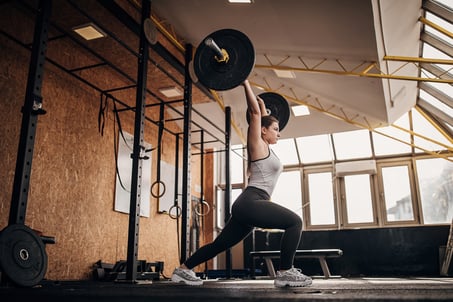 The first thought that comes into most people’s heads when they hear the word weightlifting is, more times than not, “bulky.” The perception is that heavy weightlifting will cause an undesired large gain of muscle mass. This is true; weightlifting will cause you to put on muscle mass, but it will take a lot more than just lifting weights to be “bulky.” Please do not let your goals steer you away from certain exercises.
The first thought that comes into most people’s heads when they hear the word weightlifting is, more times than not, “bulky.” The perception is that heavy weightlifting will cause an undesired large gain of muscle mass. This is true; weightlifting will cause you to put on muscle mass, but it will take a lot more than just lifting weights to be “bulky.” Please do not let your goals steer you away from certain exercises.
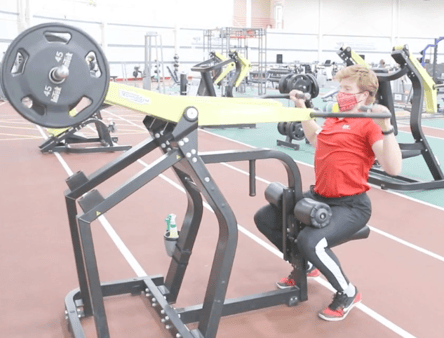 The traditional bodybuilding split of working one muscle group per day might work for the dedicated, high-level competitive bodybuilder who makes their living in the gym. But for the general population only looking to shed some unwanted pounds and improve their overall health, the traditional bodybuilding split is not ideal. Working multiple muscle groups in the same session is much more ideal because it ramps up the body’s metabolism more than working a single muscle group each day. To achieve this, we train the movement, not the muscles.
The traditional bodybuilding split of working one muscle group per day might work for the dedicated, high-level competitive bodybuilder who makes their living in the gym. But for the general population only looking to shed some unwanted pounds and improve their overall health, the traditional bodybuilding split is not ideal. Working multiple muscle groups in the same session is much more ideal because it ramps up the body’s metabolism more than working a single muscle group each day. To achieve this, we train the movement, not the muscles.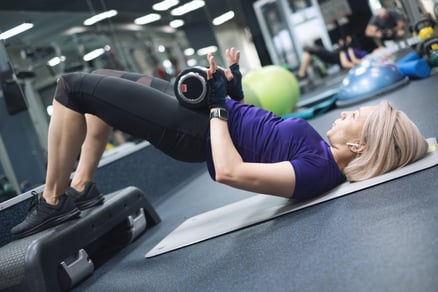 Squatting has always been the go-to exercise for those who want to make glute gains. You have probably heard someone say, “If you want to get better glutes, squatting is the way to go.” Recently, though, hip thrusters have gained momentum as the best exercise for glute development. Although, there is no concrete evidence that one is better than the other, some
Squatting has always been the go-to exercise for those who want to make glute gains. You have probably heard someone say, “If you want to get better glutes, squatting is the way to go.” Recently, though, hip thrusters have gained momentum as the best exercise for glute development. Although, there is no concrete evidence that one is better than the other, some 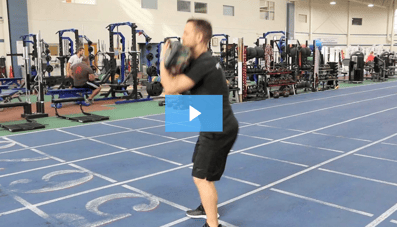
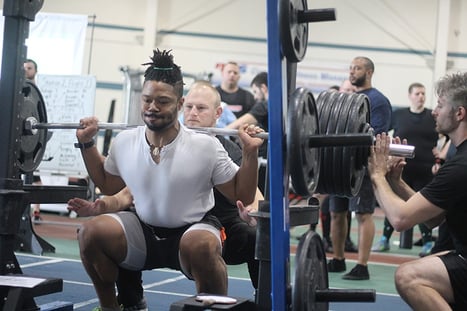 For years fitness enthusiasts have used the colder months of the year as an opportunity to put on muscle mass (or
For years fitness enthusiasts have used the colder months of the year as an opportunity to put on muscle mass (or 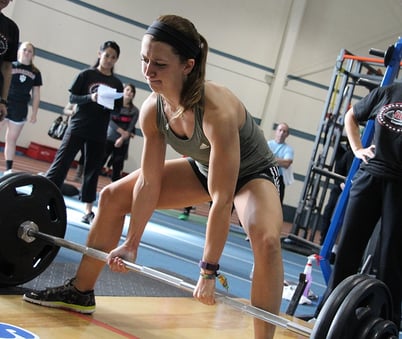 So which type of hypertrophy should you go for? That depends on what your personal goal is. Ask yourself these three quick questions before you approach method 1 or method 2:
So which type of hypertrophy should you go for? That depends on what your personal goal is. Ask yourself these three quick questions before you approach method 1 or method 2: